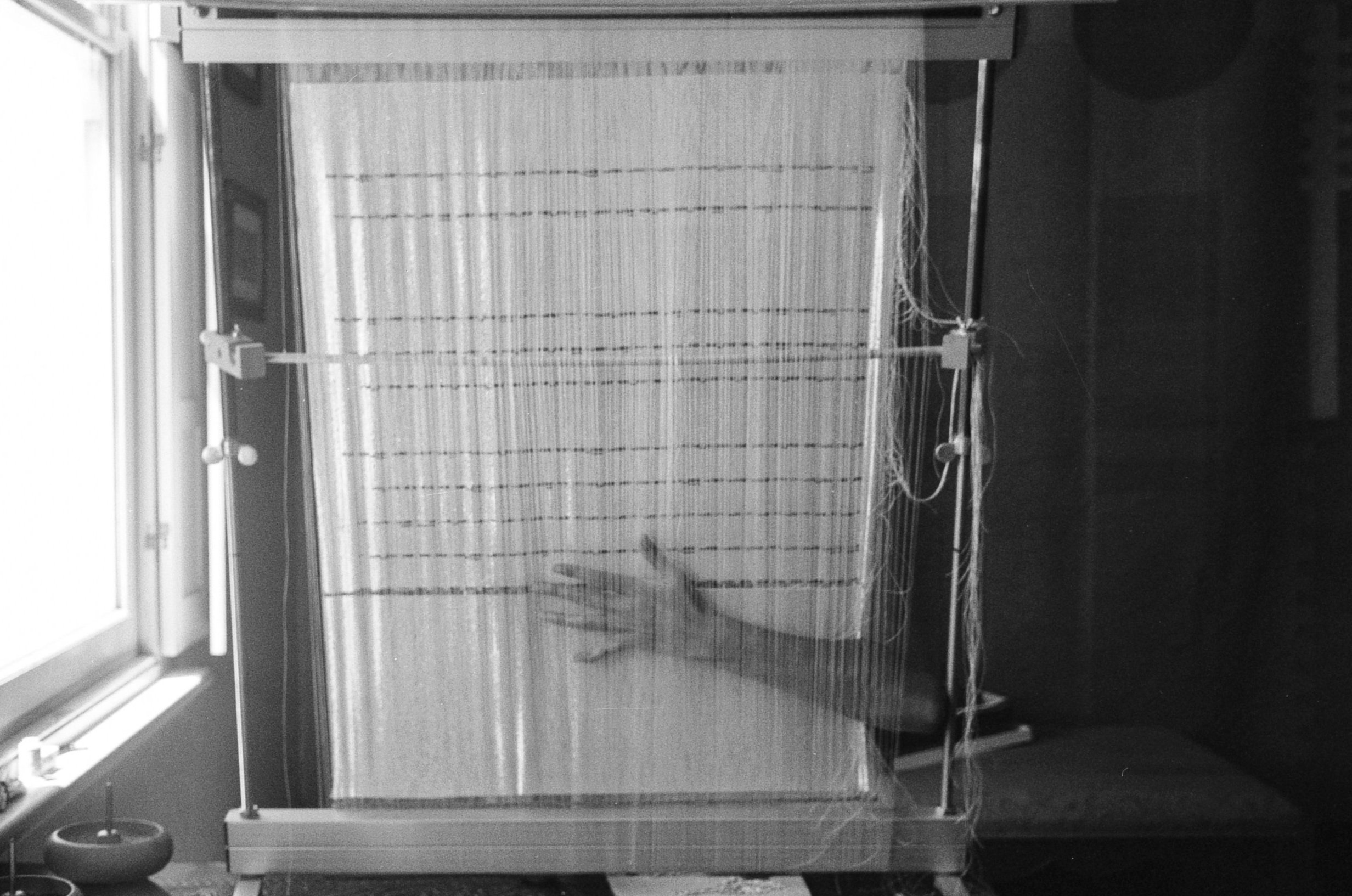Opus No.1
Exhibited at Spring 1883 in August 2023
Catalogue essay by Amelia Wallin
Opus No.1 is a large beading made of bright sterling silver plated glass seed beads. It is named after a song written by Tim Carleton, who created the piece at 16-years-old on a 4-track tape recorder in 1989. This song is now used as hold music by many institutions, including the Australian Government’s social services program, Centrelink. This song has been transcribed into a visual code and woven into the grid of the beading.
Laddawan has chosen this song to think about the function of hold music as an institutional language or tool that holds the individual in place. By drawing on Henri Bergson’s PhD thesis, ‘Time and Freewill’, 1889, Laddawan has thought about time and its relation to space. Bergson states that clock time has been created by unitizing the measurement of locomotion (how long it takes the earth to travel around the sun and then dividing this into smaller segments: months, days, hours, minutes). One hour on the phone to Centrelink is therefore a unit of movement. ‘Lived time’ falls out of this equation of units. It is unexplainable - an internal, emotional experience that cannot be quantified. Clock time and institutions have both been created for utility – in order to control and organise social life. With this in mind, Laddawan considers how people are at once independent of the locomotion of clock time, yet can be controlled/live by it.
Whilst making this artwork, Laddawan has questioned how music may be a combination of ‘clock time’ and ‘lived time’. Music scores mark time through space (clock time) whereas listening to music is aligned with lived time (inner experience). Laddawan has thought about these ideas when creating her first iteration of music code. With Henri Bergson’s dualistic theory of time in mind, Laddawan has created separate lines for rhythm (clock time) and notes/pitch (lived time), unlike traditional Western notation that merges these elements together. Western music notation shares similarities with bead-weaving: moving forward from left-to-right, top-to-bottom, counting rhythmically. Both practices (bead-weaving and playing sheet music) require the individual to sit in time, without the freedom to go back or jump ahead, for the work to unfold. On the other hand, when listening to music, one is often unaware of the music score or timeline they are flowing through.
In the context of Centrelink, Opus No.1 is used to obscure one’s experience of lived time, and to create the sensation of moving forward. Without hold music playing, there is silence, and more unstructured space for ‘lived time’ to be felt (impatience). Hold music draws the body into the time of the institution, filling the gap produced by expectation. By translating Opus No. 1 as a visual score and embedding it into the work, the institutional hold music that ‘holds’ the individual in time, is rendered visible.
Opus No.1, 2023
Glass, sterling silver, thread
770mm x 620mm
Beading in Music Code
Opus No.1, 2023 (on the loom)
Glass, sterling silver, thread
770mm x 620mm
Beading in Music Code
Opus No.1, 2023 (detail)
Glass, sterling silver, thread
770mm x 620mm
Beading in Music Code
Opus No.1 work in progress, 2023
Graphic illustration of sheet music, 2023
Graphic illustration of Music Code, 2023
Segment of Opus No. 1 in Music Code






